The Gerewol festival is a one-of-a-kind experience! It’s a unique week-long celebration of love held by nomadic tribes predominantly in Niger and Chad and always after the rainy season.
Imagine men dressed in incredible costumes, with painted faces and dramatic makeup, dancing and chanting to attract a wife or even just a partner for the night. It’s all about showing off their beauty, patience, and strength to impress the women.
This “beauty pageant with a twist” happens in the scorching heat, sometimes reaching 40°C (104°). The men dance and sing for hours, trying to look like graceful birds with their movements and chanting. It’s a truly captivating spectacle!
We were lucky enough to witness this amazing tradition in the Niger Sahel region. While the Gerewol Festival is most famous in Niger, similar festivals also happen in other countries like Chad, Cameroon, and Nigeria.
The Risks of Travel to the Gerewol Festival Niger

As amazing as the festival was, it is important to understand the risks associated with travel to the Gerewol Festival Niger.
Traveling to Niger right now carries significant risks due to political instability and security concerns. The July 2023 coup led to increased military presence and potential for unrest. Terrorist groups are active, particularly in border regions, and kidnappings can occur.
It’s crucial to check your government’s travel advisories before considering a trip, as most advise against all travel to this country. For us, we weighed the potential risks against the amount of military support that we were promised and decided to take the journey. However, everyone’s risk tolerance is different – so only you can make that decision for yourself.
Background on the Gerewol Festival Niger and The Fulani People
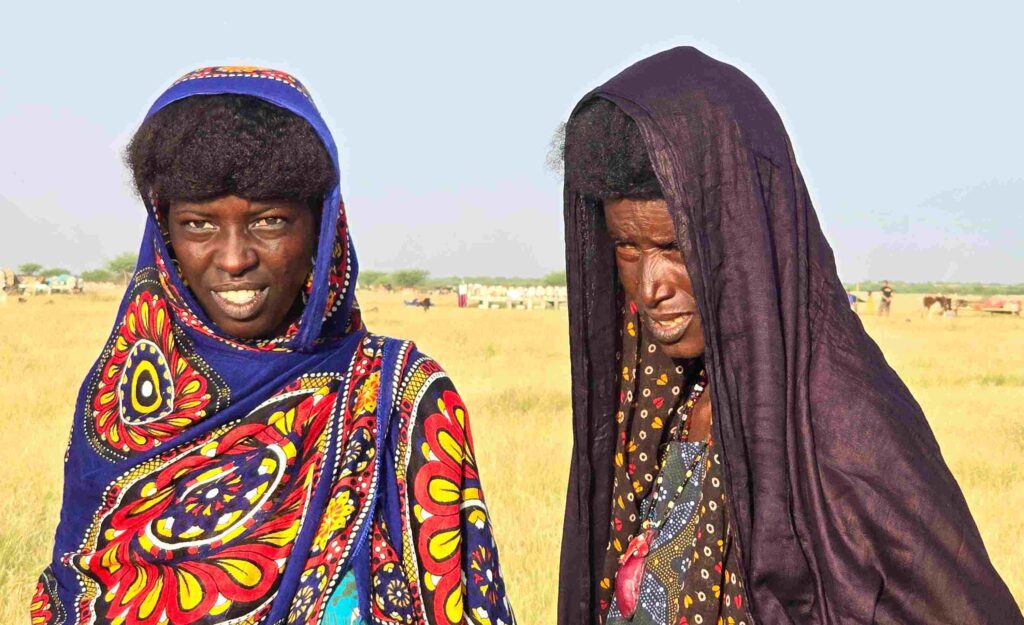
Traveling to the Gerewol Festival in Niger is not just a trip, but an adventure that blends cultural immersion, stunning desert landscapes, and the joy of experiencing a centuries-old tradition firsthand. It is one of the most unique and colorful festivals in the world, celebrated annually by the Wodaabe Fula (or Fulani) people—a nomadic tribe living in the Sahel region of Africa.
This was an extraordinary experience that took us deep into the heart of Niger, a country often overlooked by travelers but rich in history, tradition, and resilient spirit.
The Fulani people are found all over West Africa. They’re known by many names, like Fulani in English and Toucouleur in French, but they’re all the same group. They speak a language called Fulfulde, which has lots of different dialects depending on where they live.
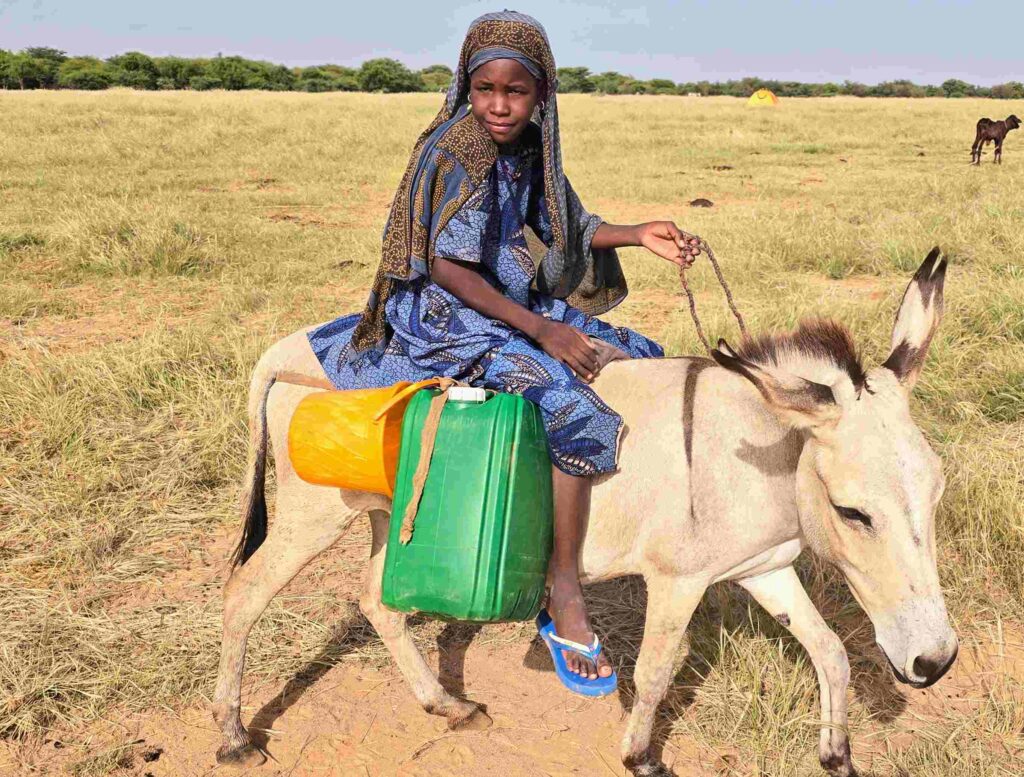
Originally nomads, the Fulani traveled around with their herds of cattle. Even today, some of them still live that nomadic lifestyle. They’ve had a big impact on West Africa, building empires, spreading Islam, and even serving in armies.
The Fulani are known for being pastoralists (raising livestock) and being traders – especially of milk. In addition, they are renowned for their strong tradition of storytelling and proverbs.
One group of Fulani, called the Wodaabe, are especially interesting. They’re famous for their unique customs and traditions, like the Gerewol festival where men dress up and dance to attract women.
The Fulani are a diverse and fascinating group of people with a rich history and culture. They continue to play an important role in West Africa today.
Tour Agency for the Gerewol Festival Tour

For this once-in-a-lifetime journey, we booked the trip directly through Zenith Tours, a locally owned tour company run by Yaou Mahaman in Niamey, the capital of Niger. Booking directly through Yaou saved us a significant amount of money.
You see, Zenith Tours actually orchestrates all activities between the Gerewol Festival and the Niger government. Since permits, visas, military assistance, etc., are required for this festival, going with a European tour agency just adds to the price of the Gerewol Festival Tour as that particular agency needs to make money on top of what Zenith Tours charges.
Having said all this, we must be frank. Due to the political unrest in the country and other issues, communication from Zenith Tours to all of us (including the much higher priced European tour companies that were present) was sub par. The coordination expected for this type of event was equally wanting.
However, if you want to participate in the Gerewol Festival Niger, going with Zenith Tours is the cheapest way to go. The Gerewol Festival through this tour company does sell out quite early in the year (we booked 5 months in advance and others were turned away at the 4 month mark).
Contact Information for Gerewol Festival Tour
To reach Yaou directly you can message him on What’s App: +33 7 85 56 13 47
Gerewol Festival 9 Day Itinerary Overview
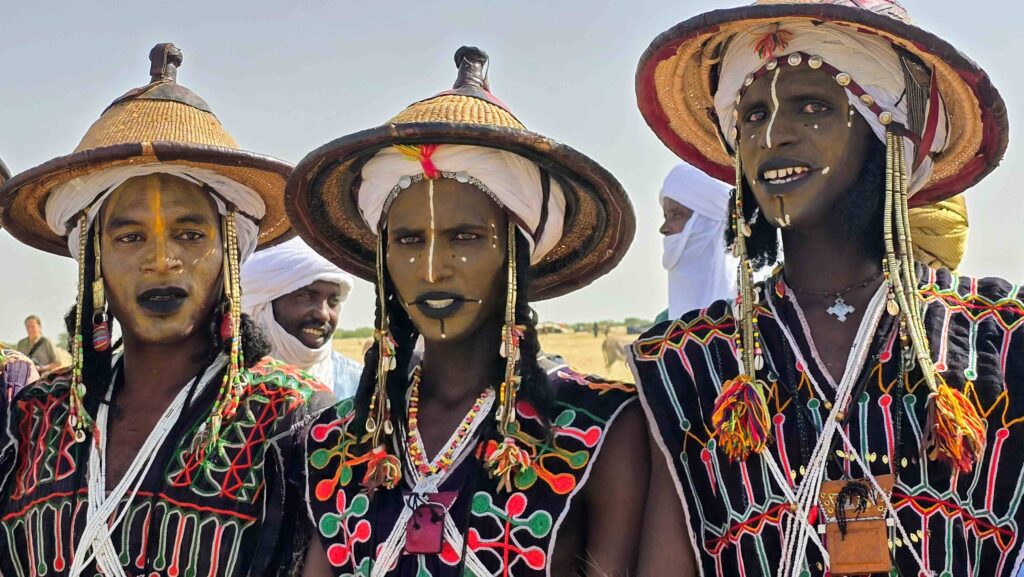
Our trip to the Gerewol Festival spanned nine days, with the itinerary crafted to include not only the festival itself but also some of the best things to do in Niger. This included some of the most iconic locations, including Niamey, Agadez, and the Aïr Mountains. Here’s a detailed breakdown of how each day unfolded:
Day 1: Arrival in Niamey

Our flight arrived in Niamey late at night, around 2:00 am. Yaou, the owner of Zenith Tours, had arranged for our flight clearance visas, which allowed us to fly into Niger. There were many other folks flying in for the Gerewol Festival on our flight as well. So we had a great time chatting while waiting in various lines.
Once we were on the ground, the immigration officers took our passports (this is normal practice in Niger and our flying visa documents). These were returned to us after the weekend at our hotel.
Once out of immigration, we were greeted by a team member from the Gerewol Festival tour company. There was quite a bit of waiting until the mini bus filled up with others and were driven to Hotel Terminus (HQ for Zenith Tours).
Hotel Terminus, while not extravagant, offered basic comforts like hot running water, a swimming pool, and a restaurant. Despite its modest offerings, this turned out to be the best hotel of the entire trip in terms of amenities.
Even though the hotel is located in Niamey (the capital of Niger) , the wifi that was offered was patchy.
Day 2: Exploring Niamey
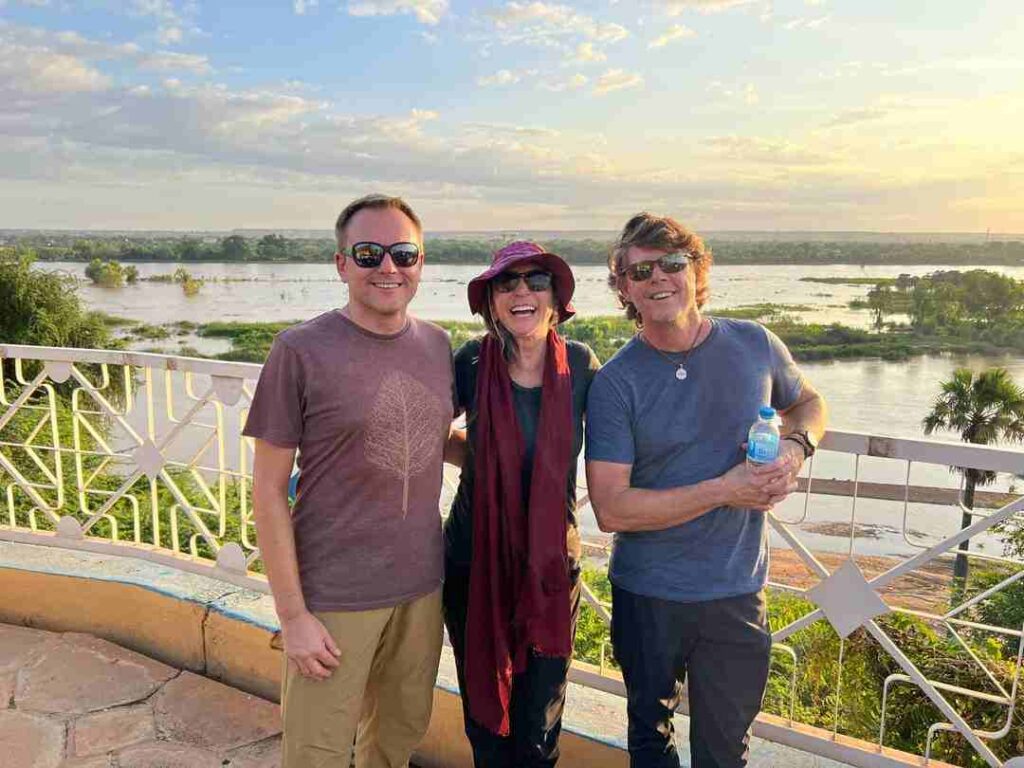
After a good night’s rest, we were eager to explore Niamey, the capital city of Niger. The first activity on our itinerary was a boat tour along the Niger River.
The river, one of the longest in Africa, provides a vital lifeline to many communities, and the tour gave us a first glimpse of the country’s rich wildlife, including several sightings of hippos. Watching these enormous creatures surface and submerge in the water was a great surprise.
In the afternoon, we were taken to the Niamey Museum, which was closed. It was strange that the tour operators did not know this. Instead, we were guided through a very sad small zoo within the museum grounds, which housed animals in the smallest of cages ranging from lions to baboons and crocodiles.

The museum grounds had some free roaming long horned cows which were stunning and definitely the highlight of this otherwise depressing part of the tour.
Afterwards, we strolled through the adjacent artisan market, where we saw intricate handicrafts, including traditional Tuareg jewelry and handwoven textiles.
In the evening, we visited the Grand Hotel for drinks. Situated on the bank of the Niger River, the hotel offers stunning views of the sunset, and it was here that we enjoyed a quiet moment, watching the golden hues spread across the sky as the sun dipped below the horizon.
Given the sparse availability of good restaurants in the area, it is important to note that Rob had a wood fired pizza here, which he enjoyed with a beer.
Day 3: The Long Drive to Agadez through Tahoua
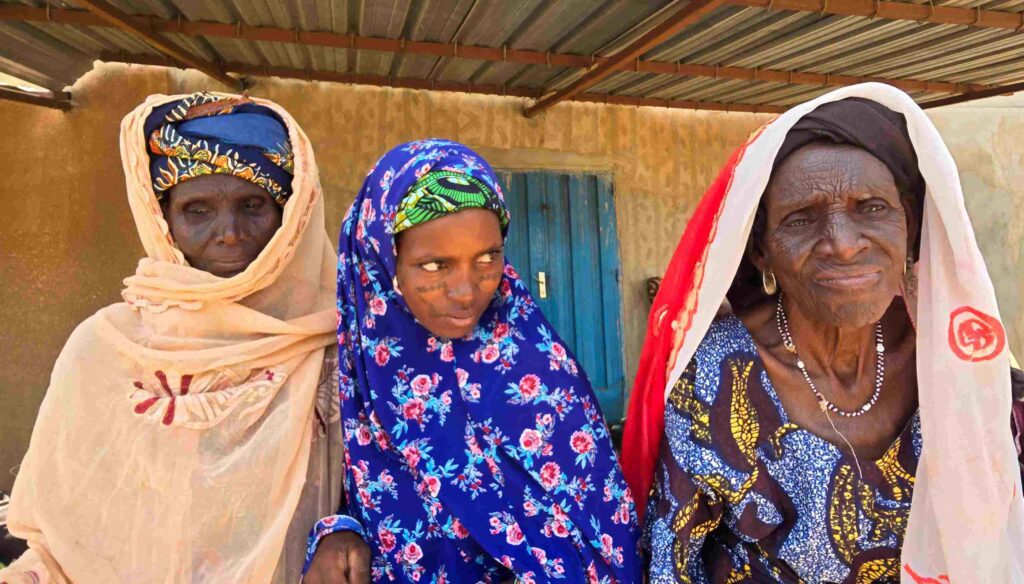
Our original plan (and paid for itinerary) was to take a short flight from Niamey to Agadez, a historic city in the heart of Niger. However, due to complications related to the political situation and the lack of available flights, we embarked on a two-day drive to Agadez instead. This was perhaps one of the most challenging parts of the trip, as the drive was long and occasionally uncomfortable due to rough road conditions.
While the drive was tough, it was also a chance to truly appreciate the vastness of Niger’s landscapes. Endless stretches of arid desert were punctuated by small villages, where we made occasional stops. One such stop was in Abalak, where we had a picnic lunch.
The highlight of this stop was visiting the local market, a hub of activity where we were greeted with warm smiles and curious glances. The people in these remote regions were fascinated by our group, and it was humbling to interact with individuals who had rarely, if ever, seen Western tourists.
We stayed overnight in a local guesthouse – Hotel Tarka halfway to Agadez in Tahoua which was mediocre at best. Dinner was also provided by this hotel which was plentiful but the food quality was what is to be expected of rural Niger.
Day 4: Arrival in Agadez
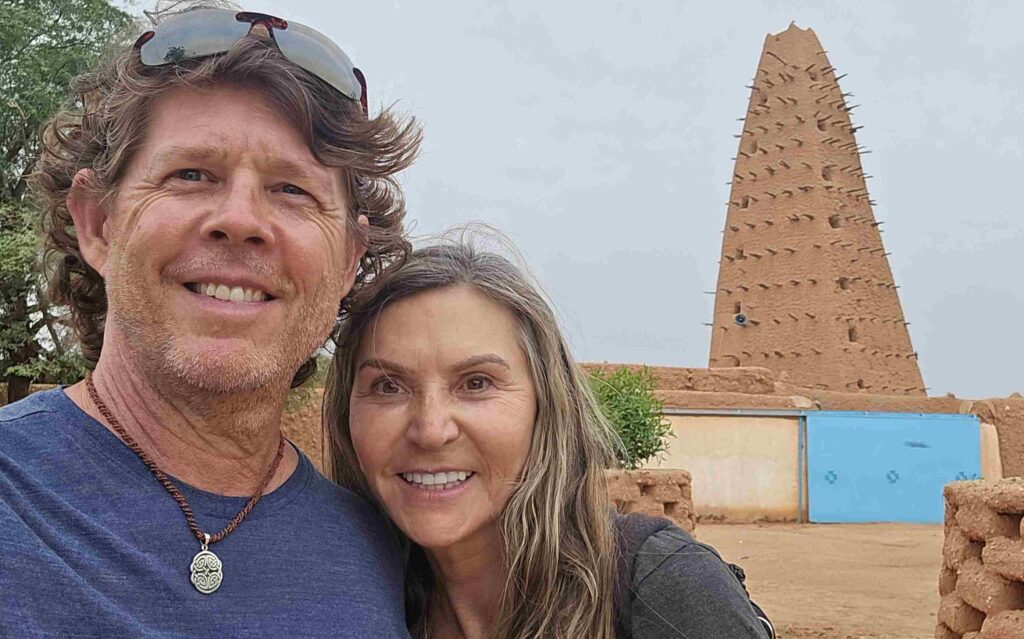
By dusk, on the fourth day, we finally reached Agadez, a city that holds immense historical significance. Known as the gateway to the Sahara, Agadez is a UNESCO World Heritage site famous for its distinctive mud mosque and ancient Sultanate of Aïr. We had only a few hours to explore the city due to the tight schedule of our military convoy, but the time we spent wandering its narrow, dusty streets gave us a taste of its storied past.
The Agadez Mosque (Grande Mosquee d’Agadez) with its tall, spiked minaret made from clay and wood, dominates the city’s skyline. It is actually the tallest mud-brick structure in the world! We were able to climb up to the top of the minaret and look down over the sacred city of Agadez. Only 3 people are allowed on top of the minaret at a time and the steps to get up there are very narrow and filled with small bats. Yes, bats!
This mosque is a prime example of the Sahelian architectural style and is one of the oldest in the region. Walking through it’s surroundings felt like stepping back in time. The entire city exudes a sense of timelessness, with its mud-brick buildings and winding alleyways.
One of our travel mates had brought a soccer ball, pump and whistle to be distributed to the eager children of Agadez. Once the items were distributed there was so much happiness as the children started to play a game! That was a magical moment!
We couldn’t spend much time here as we had to follow the convoy’s timeline, but the glimpse that we got into Agadez left us wanting more. It’s a city that deserves to be explored in greater depth and we were sad to have driven for 2 days to get here for such a short period of time.
We ended up staying in HOTEL de la Paix (the other option was Hotel Ténéré – which was not offered to us). This hotel did not have any running water until we all complained and a few hours later it was turned on.
Dinner was not included in our tour price. However, we all went to the highly recommended Italian restaurant called Restaurant Le Pillier which had a nice vibe and a selection of wines which a few of our friends enjoyed. Although the food was better than the rest of the offerings thus far, it was average at best by western standards.
Day 5: Entering the Aïr Mountains and the Gerewol Festival Site
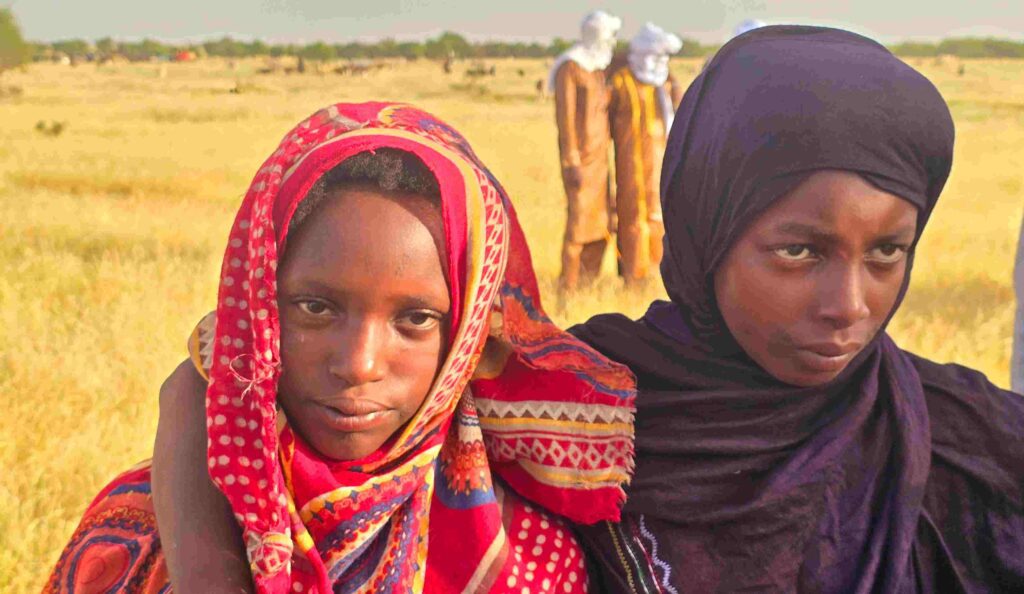
From Agadez, we turned around and continued our journey back towards the Gerewol Festival site. After many hours the road turned into a dirt one and we turned off heading north entering the rugged and picturesque Aïr Mountains.
These mountains, characterized by their jagged peaks and vast desert valleys, create an otherworldly landscape. The terrain became increasingly barren as we approached the Gerewol site, where the Wodaabe Fulani people were already gathering for the festival.
After a long drive, we arrived at the Gerewol Festivall campsite in the late afternoon. The campsite was basic. Tents and sleeping pads were provided and our drivers assisted with the set up.
Food was offered 3 times a day al fresco with an afternoon tea each day. If you happen to be vegan like me, I highly recommend that you bring bars, fruit, vegan dried soup packets and anything else that you may like as my options for most of the meals were limited at best.
As night fell, we were surrounded by the sounds of the desert—howling winds, distant animal calls, and the faint rustle of nomadic tents being assembled. It felt surreal knowing that we were on the verge of witnessing one of the most unique cultural events in the world – the Gerewol Festival.
Day 6: The Gerewol Festival
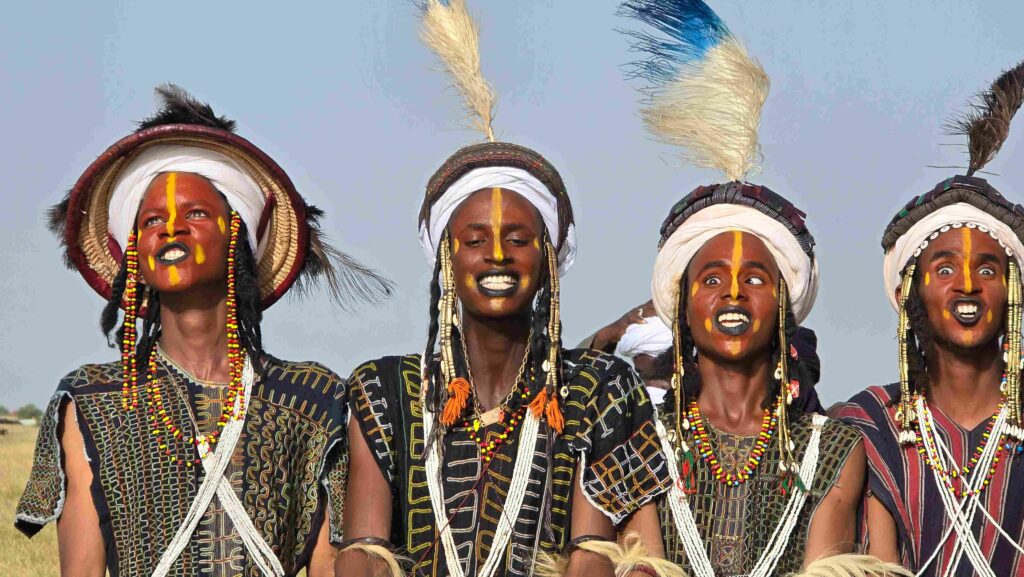
The Gerewol Festival is truly unlike any other. Over the course of two days, we watched the Wodaabe men engage in elaborate dance competitions, all in the hopes of attracting the attention of marriageable women.
The festival is a celebration of beauty, fertility, and endurance, with the men spending hours adorning themselves in traditional costumes and face paint. Their makeup is an essential part of the ritual, with black, yellow, and white pigments carefully applied to enhance their features, particularly their teeth and eyes.
The men’s performances, known as Yaake dances, are mesmerizing. They line up shoulder to shoulder, standing tall and proud, swaying in unison while chanting in deep, rhythmic voices. Their movements are graceful yet vigorous, and the effort they put into maintaining their poise is palpable.

The women, dressed in colorful fabrics and intricate jewelry, watch from the sidelines, silently judging the men’s appearances and grace.
One of the most striking aspects of the festival is the importance placed on male beauty—a stark contrast to many cultures where female beauty is the focal point. The men are judged on their height, whiteness of their teeth, and the symmetry of their facial features.
There’s also a strong emphasis on endurance; the men must dance for hours without breaking composure, a testament to their strength and stamina.
During the festival, we had the opportunity to interact with many Wodaabe people. This was especially true at dawn as we walked over to their nomadic tents made up of stick and material.
Most were incredibly welcoming and eager – especially to share their culture. Some sold handicrafts, while others were interested in getting some medication from us. such as pain relievers and antibiotics. Many people in these remote communities lack access to healthcare, so even small gestures like this were deeply appreciated.
Day 7: Final Day at the Gerewol Festival and Departure
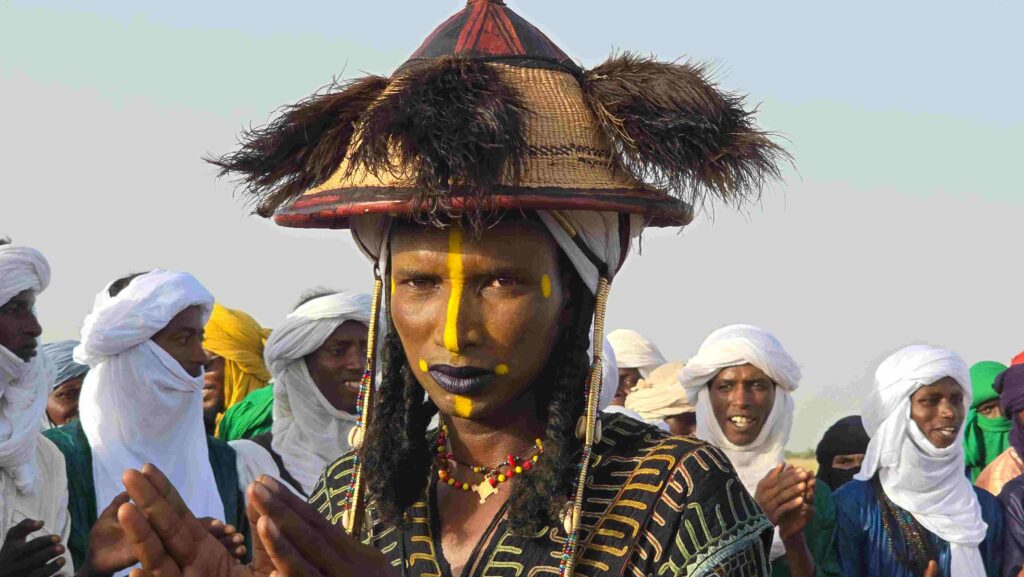
On the final day of the Gerewol Festival, the excitement reached its peak. The young men prepared for the final dance-offs, hoping to catch the eye of the women who would choose their partners for marriage. The energy in the air was electric, with the entire community gathered to witness the culmination of this extraordinary event.
Unfortunately, our time at the Gerewol Festival was cut short due to security concerns, and we had to leave earlier than expected. The military escort, which had been with us throughout the trip, urged us to depart for safety reasons. While it was disappointing to leave so abruptly, the memories of the festival remained vivid in my mind.
Given the military situation we had to wait for long periods of time in some spots, yet in others we were rushed through with barely a “bush” break.
The evening was spent in Tahoua at the Hotel Marianne where the proprietors had not paid their wifi bill. For some reason data was also not working in this building – only in the parking lot. Our dinner was served at the hotel.
Day 8: Tahoua back to Niamey
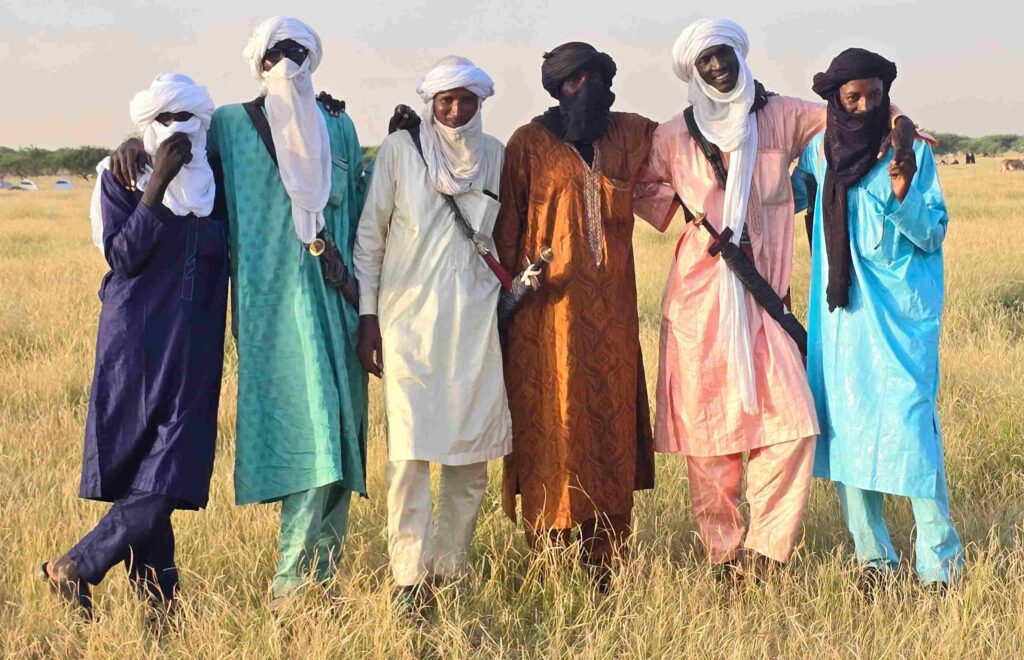
We began another day with an early departure, leaving Tahoua and driving past small villages like Yama, known for its Sudanese-style architecture and award-winning mosques. Unfortunately, due to the military situation, we couldn’t stop to explore.
We enjoyed a quick lunch in Birni Konni before continuing towards Niamey. Our planned visit to Dosso and the Sultan’s palace was also canceled due to security concerns.
However, we had a fantastic opportunity to briefly visit the Kouré Giraffe zone, where we encountered a group of 3 wild West African giraffes, easily identifiable by their distinct white “socks.”
There are an estimated 600 West African giraffe remaining in the wild and all of them live in Niger in this isolated pocket (the Giraffe Zone) east of the capital Niamey. This is part of the transition zone of Niger’s W National Park Biosphere Reserve.
Finally, we arrived back in Niamey and settled into the familiar Hotel Terminus. That evening, we ventured out to a nearby Chinese restaurant, The Dragon D’or, for dinner. Collectively this was our favorite restaurant of the whole trip!
During our meal we reflected on the incredible experiences of the past week. The Gerewol Festival gave us a rare glimpse into a vanishing way of life and a celebration of human resilience, beauty, and love.
In addition, we were grateful to have met some great people during this journey to form lasting friendships. However, the poor communication and coordination of the tour wore on all of us. We were beaten down and exhausted – ready to depart Niger.
Day 9: Departure from Niamey
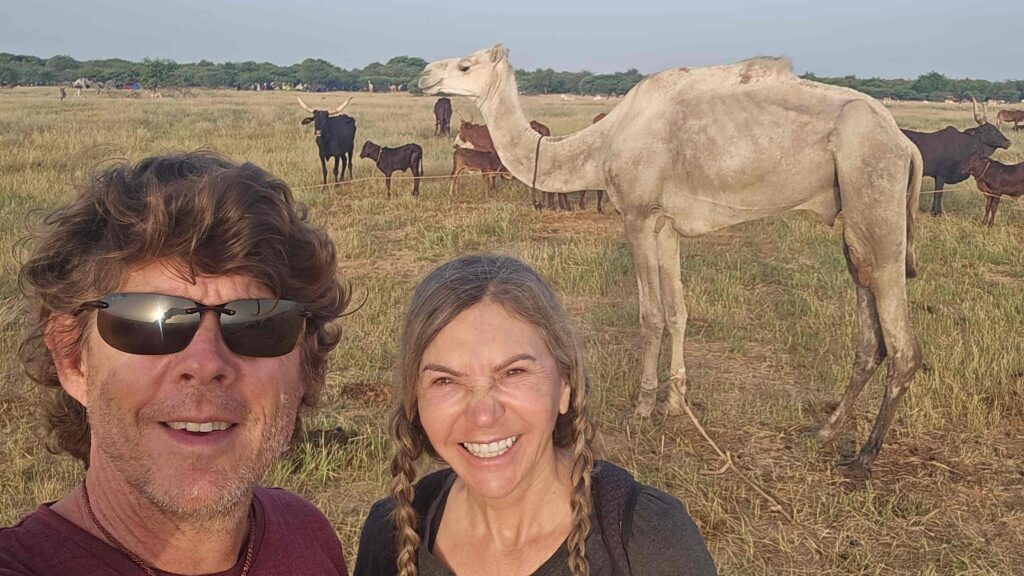
After breakfast we boarded the minibus to the airport. Security was intense – customs agents searched our bags thoroughly. They took our friend’s nail file, tweezers, and a small Swiss Army knife.
When they tried to confiscate my tweezers and our glass cups, I had to argue with the screeners (in my broken French!) that we’d traveled to 195 countries and never had those items taken away. Thankfully, they finally relented.
However, we were searched again prior to boarding! Thankfully, no items were taken away. Others – especially the younger male travelers had mentioned that customs authorities were looking for bribes – we did not experience that.
Reflections on the Fulani and the Gerewol Festival
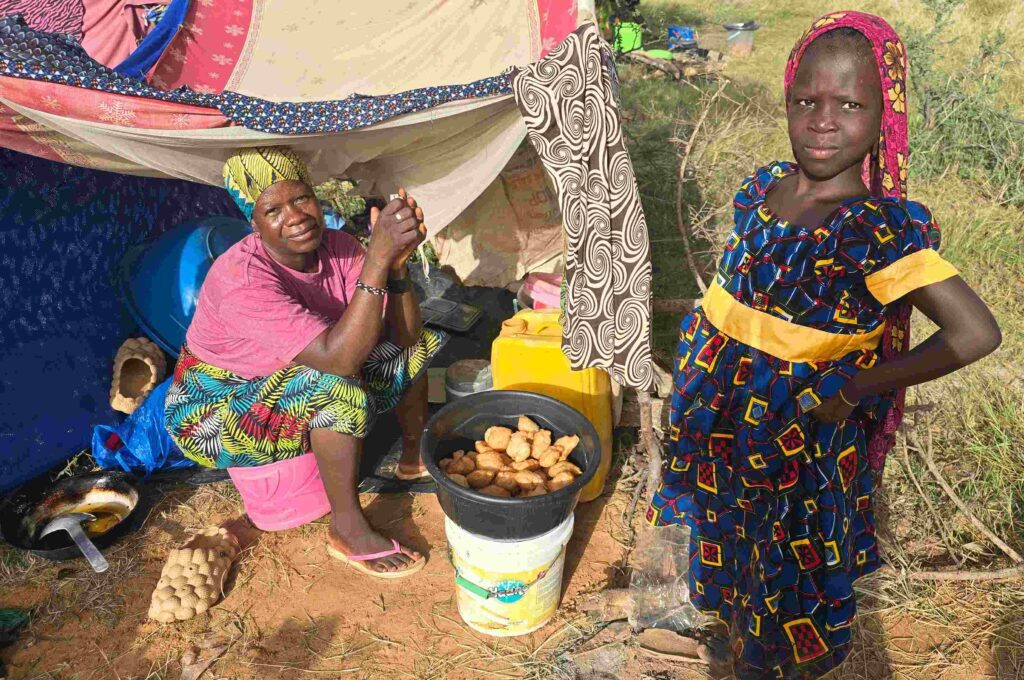
The Fulani, or Wodaabe, are one of the largest ethnic groups in West Africa, with a rich history that stretches across multiple countries, including Niger, Nigeria, Chad, and Cameroon. Known for their nomadic lifestyle, they have traditionally survived by herding cattle and living off the land.
Despite the challenges of modernization and climate change, many Fulani communities continue to uphold their cultural traditions, with the Gerewol Festival being one of the most significant.
The festival itself is more than just a courtship ritual—it is a celebration of Fulani identity. Beauty, endurance, and poise are deeply ingrained values in their culture, and the Gerewol Festival offers a rare opportunity for young men and women to demonstrate these qualities.
For the Wodaabe, the Gerewol festival is not just about finding a spouse but about reaffirming their cultural heritage and their connection to the land and each other.
Wrap Up: Gerewol Festival Tour and Things to do in Niger

Traveling to the Gerewol Festival was not easy—it required careful planning, patience, and a willingness to travel for days in a vehicle with very limited breaks. From the challenges of navigating Niger’s political landscape to the discomforts of long desert drives, this trip tested our endurance at times. But in retrospect, every hardship was worth it.
The chance to witness the Gerewol Festival firsthand, to interact with the Wodaabe people, and to see their traditions come alive was an unforgettable experience. The colors, the dances, the music, and the sense of community that pervades the festival make it one of the most extraordinary cultural events in the world.
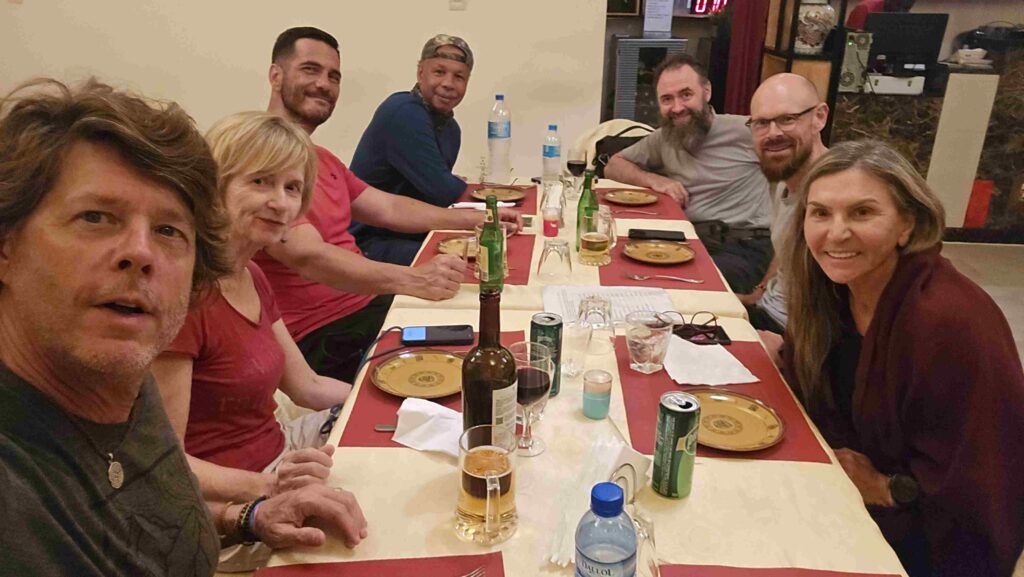
Choosing to travel with Zenith Tours directly was a wise decision for the price. Every tour agency (including some very costly ones) received the same itinerary and service. However, the communication from Yaou and the tour agency were the worst that we have ever experienced. And we do feel good that our money did not go to European tour agencies but directly to the local economy.
The Gerewol Festival is a reminder that, even in a rapidly changing world, some ancient traditions remain steadfast. It is a celebration of life, beauty, and resilience—and for anyone willing to embark on the journey, it offers a window into a world that is both ancient and timeless.
Have you been to the Gerewol Festival anywhere in Africa? Please do let us know your thoughts about it in the comments.
In some ways Niger reminded us of Mali. The Agadez Mosque was extraordinary and was similar to some of the mud mosques that we appreciated in both Mali and in Burkina Faso.
Are you interested in attending a Gerewol Festival tour and looking for the best things to do in Niger? Let us know if you have any questions, by writing in the comments. We love to help fellow travelers.


1 Comment